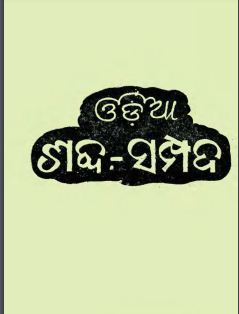Published in 1970, “Odia Sabda Sampada” by N.C. Das is a significant contribution to the study and appreciation of the Odia language. This compilation focuses on enriching vocabulary through a detailed exploration of word meanings, synonyms, and antonyms, making it an invaluable resource for scholars, students, and language enthusiasts alike. In a world where linguistic nuances are often overlooked, Das’s work seeks to preserve and celebrate the beauty of the Odia language.
“Odia Sabda Sampada” serves as a systematic compilation of Odia words (sabdas), showcasing their meanings, usage, and associated words. N.C. Das meticulously categorizes words, making it easier for readers to locate specific terms and understand their contexts. This structured approach is particularly beneficial for learners, as it provides a clear framework for mastering vocabulary.
The book is divided into various sections, each addressing different aspects of word meanings. By presenting words alongside their definitions, Das enables readers to not only understand individual terms but also to appreciate their significance within the broader tapestry of the Odia language. This comprehensive compilation contributes to the preservation of cultural and linguistic heritage, allowing future generations to connect with their roots.
Das’s exploration of word meanings goes beyond simple definitions. He delves into the connotations and contexts in which words are used, illustrating how language reflects culture and thought. For instance, he might present a word related to nature and couple it with excerpts from traditional Odia literature that emphasize the ecological wisdom embedded in the language.
By providing rich contextual backgrounds, Das enhances the readers’ understanding of how language evolves and transforms within specific cultural settings. This approach fosters a deeper appreciation of not only the vocabulary but also the philosophies and values intertwined with the language.
One of the standout features of “Odia Sabda Sampada” is its focus on synonyms (similar words) and antonyms (opposite words). By offering a list of synonyms, Das enables readers to explore the subtle differences in meaning and usage among words that may appear similar at first glance. This is crucial in honing language skills, as it encourages learners to select words with precision, enhancing both oral and written communication.
Conversely, the inclusion of antonyms provides a solid understanding of the spectrum of meaning associated with a given word. This aspect of the book serves to reinforce the idea that language is a dynamic interplay of contrasts, enabling speakers to articulate thoughts more effectively. By mastering both synonyms and antonyms, readers can enrich their vocabulary, artfully expressing emotions and ideas.
“Odia Sabda Sampada” remains relevant, even decades after its publication. As the Odia language continues to grow and adapt, works like Das’s become essential in grounding contemporary expressions in a rich linguistic heritage. The book serves not only as a reference guide but also as a source of inspiration for writers, poets, and educators seeking to preserve and promote the nuances of Odia.
In conclusion, N.C. Das’s “Odia Sabda Sampada” is a vital compilation that opens doors to the rich vocabulary and intricate beauty of the Odia language. By exploring word meanings, synonyms, and antonyms, this work serves as an essential resource for anyone interested in enhancing their linguistic skills while fostering a deeper connection to Odia culture and heritage. Whether for academic purposes or personal enrichment, this book stands as a testament to the enduring power of language. ️
Books Info
| Books name | Odia Sabda Sampada |
| Author | N. C. Das |
| No Of pages | 87 |
| Publisher | NA |
| Publication | 1970 4e. |
| Printed At | NA |
| Distributor | NA |

